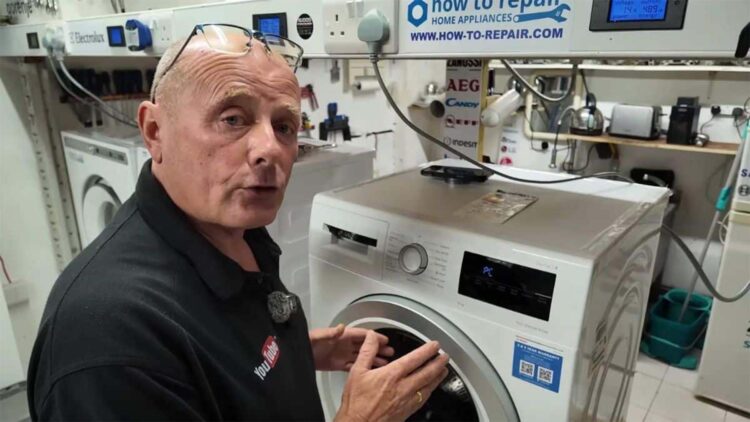Planned obsolescence is real, according to an expert in appliance repair, and the design of many contemporary machines makes repairs either impossible or prohibitively costly, leading to people giving up.
Paul Charmbury, a UK technician with over 40 years of experience, cites Bosch and the washing machine’s design, particularly the drum, as evidence that customers are being guided toward replacement rather than repair. The outcome? More purchases, more annoyance, and an increasing amount of electronic trash that contributes to a larger disposable culture.
His criticism goes from a single brand to the larger appliance sector. Furthermore, he is posting notes about how long their machines last and when they break on YouTube rather than whispering this in a workshop.
What the repair expert is seeing
The washing machine drum marks a turning point in Paul Charmbury’s life. A washing machine with an older design could be kept in good working order for years at a fair price by having its bearings and other parts changed. He claims that many of the more recent models are welded shut and sealed. Everything changes with that one decision: you have to replace the entire assembly or leave when the drum fails because you can’t service the internals.
Charmbury maintains that this is not a coincidence: “I’ve been repairing appliances for over 40 years, but I’ve never seen a problem as widespread and intentional as this.” he wrote on YouTube. “This isn’t bad design; it’s a deliberate strategy to force people to buy a new machine. It creates huge amounts of electronic waste and makes life impossible for honest repair businesses.” According to him, this is no fair game.
Repair vs. replace: the math that affects the market
The price and policy implications of a sealed washing machine drum are the main topics of Charmbury’s criticism of Bosch. According to his breakdown, if the drum fails, you will need to purchase the entire drum assembly, which costs approximately $480.
That price tag compromises the argument for appliance repair because many households will calculate the cost and decide to buy a new washing machine instead, fearing that they will have to pay almost half as much for a replacement only to have it break again later. Charmbury says that this reduces independent repair shops while preserving planned obsolescence and keeping the appliance industry alive with new sales.
To get the conversation out, he started a small project on YouTube called a “crowdsourced database” where users can share their machine model and the moment it failed. The goal is to map durability in the real world and demonstrate the true lifespan of these machines. Customers may find it more difficult to ignore failure patterns as more entries are received, providing them with a better understanding of what they are investing in and when problems are likely to arise.
Saving wallets and the planet
Charmbury’s assertions go beyond technical specifics. They address the environmental costs of short-lived design as well as the daily experience of ownership. Many families are intentionally encouraged to make another purchase when a washing machine drum cannot be opened and the only solution is to replace it, which costs $480.
The stakes are both global and practical. Consumers will bear the financial and environmental costs of appliance repair if the appliance industry locks down parts and prices. Turning separate stories into a shared record that shows whether there is a pattern rather than an isolated incident is a small but powerful step in Charmbury’s call for public data on YouTube.
With more information, consumers can support products—and brands—that allow for repair and support designs that are more durable and reusable.

